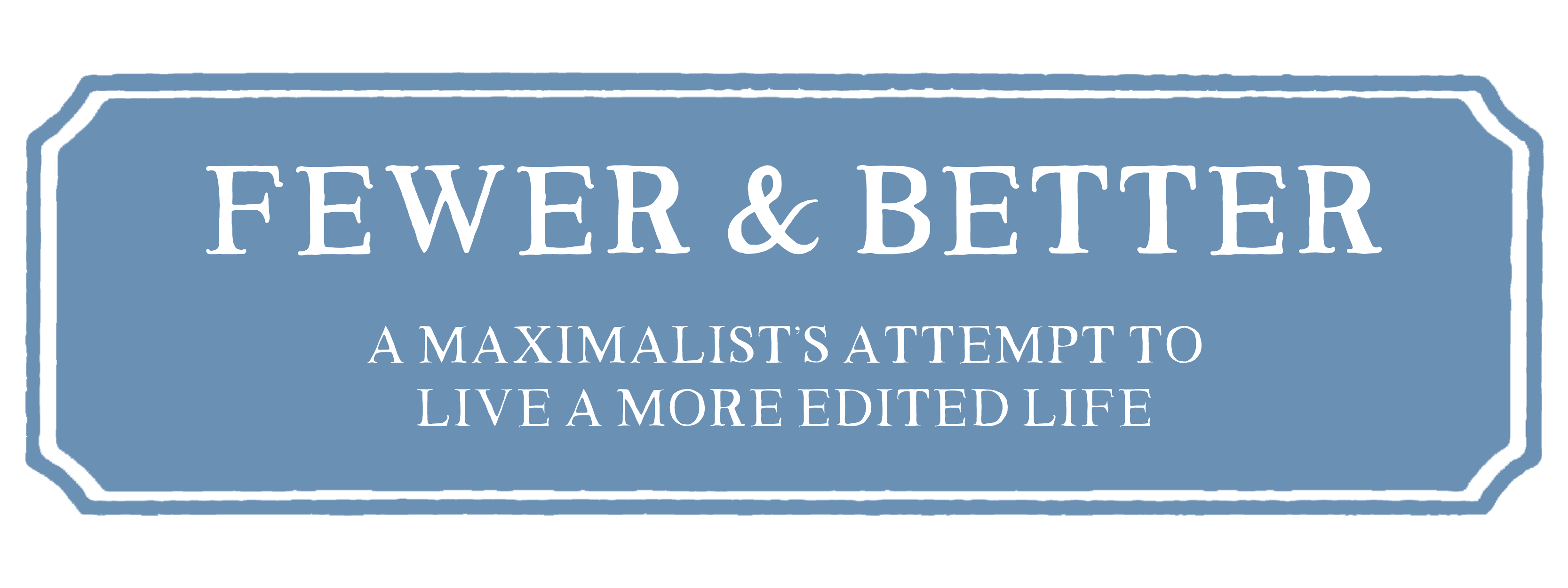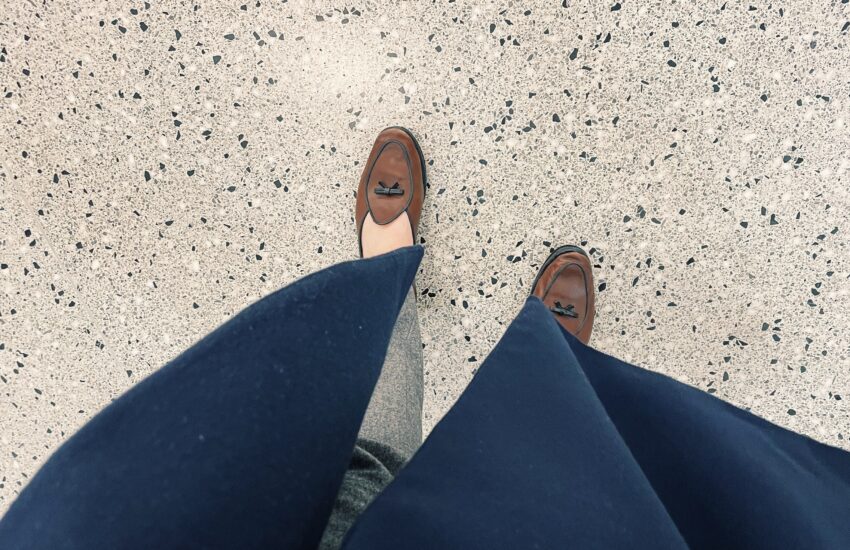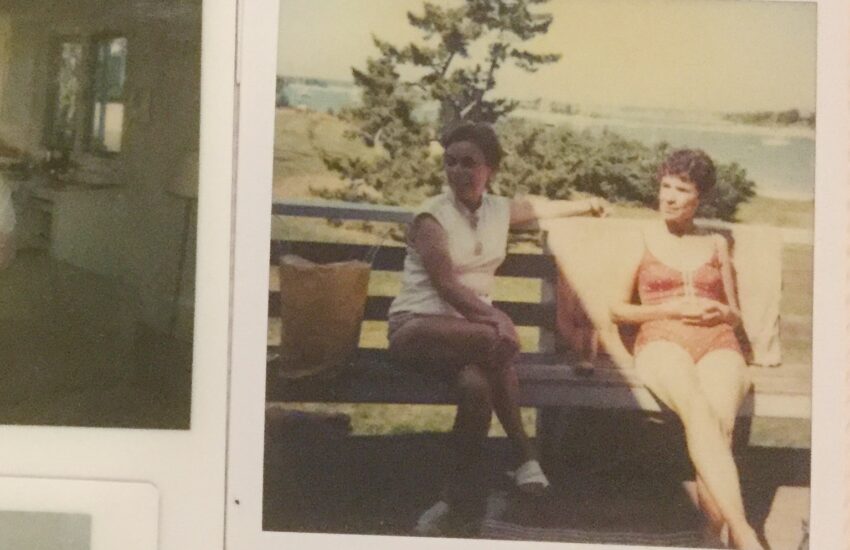How Do You Practice Conservation?
One of the biggest benefits, to me, about this new shift towards an edited life is the opportunity to protect our earth’s resources. Purchasing only clothes I will wear frequently, searching out vintage pieces, reupholstering furniture instead of replacing it, shopping small, using what I already have–all this adds up, slowly but surely, into reducing our personal footprint and reducing waste. The sheer amount of energy, material, water that goes into making “fast fashion,” or cheap furniture made out of particleboard, is astounding. And a lot of it is really terrible for the environment. When we were purchasing a bed for our little one, we were trying to track down a reasonably priced mattress that could grow from preschool years to teenaged years. It was so difficult to find a mattress that didn’t include fiberglass, and nearly impossible to find a bedframe that didn’t have a California Prop 65 warning. (We chose this mattress*, this foundation*, this bedframe*, and this headboard*, by the way, and are extremely happy with our selection!) Although it took a long time to research, we feel so much better knowing that we aren’t contributing as much to chemical pollution and we are also not bringing dangerous toxins into our home.
Although I don’t speak about it often, my exposure to outdoor spaces–National Parks, landscape conservatories, state parks–has had a huge impact on my life. Going to Boulder, conservation was a part of daily life–refillable water bottles, only organic, free-range, grass-fed food, etc. in the dining halls, an emphasis on the outdoors. And I’ve tried to internalize my effect on the world around me, too, and keep it as impact-less as possible.
One of the ways I’m doing this is by no longer using plastic water bottles. We see a lot of bloggers and influencers touting the merits of the Stanley tumbler, which seems great, but impractical for me. While I generally work from home, my schedule nowadays involves driving to school for drop-off and pick-up. I want something that I can carry with me that won’t spill, so I really like the Yeti and Tervis tumblers we already have, depending on what I’m bringing with me. Water is such a precious resource–the most precious, in my opinion–so if I can reduce waste by bringing my water with me in a reusable bottle, well, every small bit helps.
I’m trying to make conservation less of a passive part of my life and more of an active part–actively choosing to shop small at our local antique shops for furniture, if needed, instead of ordering something new; walking down the street to our amazing local bookstore for my book club book of the month, instead of having something delivered; meal planning to reduce food waste. And I feel like not only is it my duty as a member of the human race, it’s also beneficial to our family–I, for one, feel better when there isn’t waste.
How do you conserve in your everyday life?




This is a topic that I think about often. It feels SO pressing and sometimes I feel as if my individual efforts (shopping less, trying to buy our food as local/organic as possible, buying antique/pre-owned) make little difference – but as you note, every little bit helps.
Yes, it definitely feels like less than a drop in the bucket sometimes–but then I try to think further down the road. Having well-made furniture of actual wood (not particleboard), will long outlast me and then my child will be able to furnish a future home with those pieces instead of having to go buy temporary solutions. And then that’s another generation stepping out of this consumer cycle. And, frankly, it’s so nice to be able to support our small businesses and the diversity of our area–farmstands, the local market, the chemist, etc–instead of giant chains where one individual shopping doesn’t matter. It’s nice to be known and to know that our investment in the community is repaid a hundred different ways, even if it’s just an investment the price of a hardcover book 🙂
Sarah, thank you for taking the time to put this together. I admit I read the title quickly and thought it said “How do you practice conversation?” however I was pleasantly surprised. Although I would love to hear your take on practicing the art of conversation – such a lost art these days with digital communication, and less and less human interaction.
This is something that is a consistent conversation in our household, and it is refreshing to hear it is in yours as well. That is a wonderful way to begin, and continue, is to keep the thought at the forefront of our mind, always considering it in small ways. It does make me feel I am doing my part, chipping away, improving, and continuing to learn about ways I can add in conservation.
One thing that I try to think about is aiming to only have natural fibers in my clothing and household fabrics. Cottons, wools, linens etc. hold up to laundering, allow your body to breathe and these fabrics break down should they end up in a landfill. When shopping, I always check the fabric labels, and I try to hand wash with The Laundress instead of dry cleaning. For interior fabrics, it has become harder as the rise of durable fabrics with polypropylene has emerged. I will admit, that for a household with children and pets, that is tempting, but I always mention that wool rugs clean very well, last a lifetime if they are well made, and cotton/linen can be made into slipcovers to be laundered.
I love that, Molly! We definitely subscribe to the only natural fibers rule as well. I like the ideal of performance fabric, but at the end of the day, it’s not the right choice for us or for the environment. Slipcovers are far preferable! Even if we all do only a little bit, it makes a big difference in the end.
And I also love your suggestion for a post on the art of conversation 🙂
As for furniture, I think the question of solid wood vs. particleboard is mixed. Particleboard uses leftover scraps and sawdust from wood processing, unlike solid wood which requires cutting down trees. However, particleboard also requires energy to produce, and doesn’t last as long. I’m not sure how it all shakes out on net but it’s something to look into.
Hi Dan, Yes, as it doesn’t last as long, and most of the time formaldehyde is an ingredient used to bind the materials together, it’s a no for us! I am also mostly talking about solid wood furniture I’ve acquired from relatives or from local antique and opportunity shops, which give new life to pieces that have already had fulfilling lives! I try to purchase any new-new pieces deliberately, so they can be reused down the line as their original purpose becomes obsolete. Thank you for your comment!